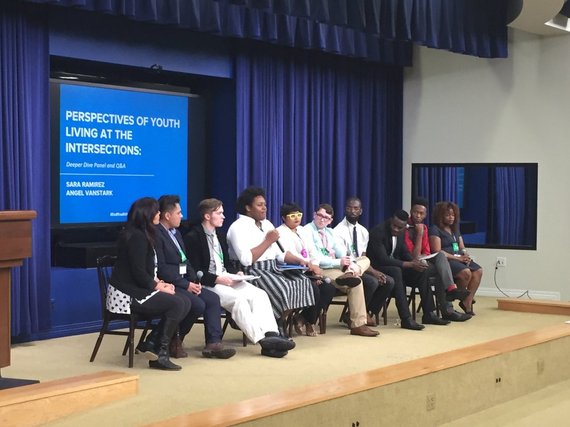At the beginning of June I attended the second Policy Briefing to End Youth Homelessness at the White House, co-sponsored by True Colors Fund. I can not speak for everyone who attended the event, but for me the highlight of the day was hearing a panel of youth speak about their experiences struggling to overcome homelessness. As one young man put it, "nobody chooses being homeless." And I think that is the first thing that people need to understand about youth homelessness. These young people do not want to be on the streets.
About 18 months ago I wrote another blog where I tried to detail who homeless youth are and why they often end up on the streets. I won't go into all that detail here, but it is important to keep a few facts in mind. There are nearly 2 million youth age 13 to 24 who experience at least one night homeless every year. Nearly 40% of these youth are LGBT, often being thrown out of religiously conservative families. Nearly 40% of homeless youth have been in the foster care system at some point. And, most upsetting of all, nearly 80% of these youth have experienced some form of physical or sexual violence at some time in their young lives. It is also important to remember that homeless youth hide in plain sight. Very few of them have serious mental illness issues or chronic substance abuse issues. So unlike many chronically homeless adults, these youth are able to make their way through our city neighborhoods largely unnoticed by the rest of us.
So why is it that I think this enormous problem can be solved? The answer is simple. Over the past two years, we've seen many communities either end or radically curb the levels of homelessness experienced by veterans. Even in communities like Los Angeles, where the number of people living outdoors has increased over the past few years, veteran homelessness is at an all time low. If we can solve veteran homelessness, we can solve youth homelessness.
The real question is not, why do I think this problem can be solved, but what will it take to end youth homelessness? There is no easy answer, but there are a few things which would help. First, we need a commitment of money from the federal government and local communities. A huge part of why veteran homelessness is down is because of the financial investment we have made to help these individuals.
Second, we need flexibility at the level of local communities to respond to the unique issues faced by youth in different communities. Homelessness in a city like Chicago where you can die of exposure in the winter is different that homelessness in Los Angeles.
Third, we need more coordination in communities across different sectors of government. The youth who end up in the foster system and in juvenile detention are often the very same youth who end up on the streets.
Fourth, we need a greater commitment to case management for youth. Every youth I have ever worked with is the victim of broken relationships and in need of caring adults to help them. Social workers who work with these youth need small case loads so that they have the time and energy to invest in their relationships with these youth. This is essential if we are to help these youth learn to trust adults again and grow into successful stable adults themselves.
Fifth, we need linkages to workforce development and education programs for these youth. Homelessness makes it almost impossible to stay effectively engaged in traditional schooling and a consistent history of employment.
But sixth, and most important, we must involve homeless youth in helping end youth homelessness. Homeless youth must be brought into the community planning process, not as token advisory groups, but as genuine collaborators. We should be paying homeless youth to serve in this capacity. The adults who work at local housing authorities are getting paid, why shouldn't the youth? We must also give youth opportunities to become peer housing navigators. At the White House meeting one of the youth on the panel was such an advocate an his work had clearly transformed and empowered him. As he, glowingly said, "This has given me a platform to help other people!"
So what can you do as an average citizen? There are two simple places to start.
First, do a quick Google search for a homeless youth organization in your community and donate a small amount of money or time to it. You would be amazed at how strapped for resources most of these organizations are. Even small donations of used clothes can go a long way.
Second, get involved in promoting advocacy for homeless youth. I am going to give you a short list of advocacy organizations and their twitter handles. Follow them, like their posts, re-post their posts, help raise people's awareness about the plight of homeless youth. Yes, together, we can end youth homelessness!
A small list Twitter accounts for national organizations fighting to end youth homelessness who you should follow and support.
A Way Home America: @awayhomeamerica
CSH: @CSHinfo
National Network for Youth: @nn4youth
Center for Social Innovation: @c4innovates
True Colors Fund: @truecolorsfund
Covenant House: @CovenantHouse
MANY: @MANYnetwork
#Endyouthhomelessness
I have many other friends and partners around the country, so if you go to my twitter @EricRicePhd you can see many more folks to support.

